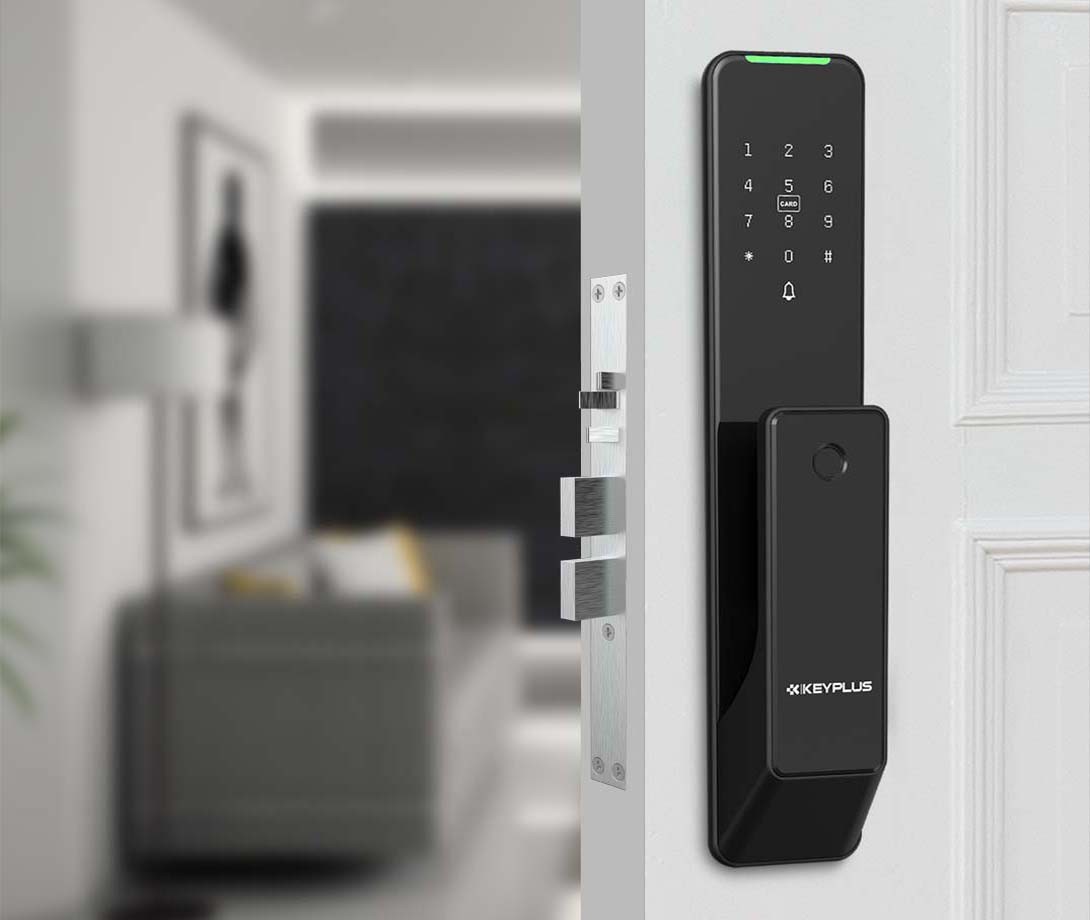How Does a Wi-Fi Smart Lock Work?
Smart home technology is transforming how Americans secure their homes, and Wi-Fi smart locks are at the forefront of this revolution. Unlike traditional locks that require physical keys, a Wi-Fi smart lock lets you control access to your home remotely using your smartphone, voice commands, or even automated routines.
But how exactly does a Wi-Fi smart lock work? And what makes it different from Bluetooth or Z-Wave smart locks?
In this guide, we’ll break down:
How Wi-Fi smart locks function
Key components and technology behind them
Setup and connectivity requirements
Security features and potential vulnerabilities
Best Wi-Fi smart locks for U.S. homes
By the end, you’ll understand whether a Wi-Fi smart lock is the right choice for your home—and how to get the most out of it.
1. What Is a Wi-Fi Smart Lock?
A Wi-Fi smart lock is an electronic door lock that connects directly to your home’s Wi-Fi network, allowing you to:
- Lock/unlock your door remotely (from anywhere with an internet connection)
- Grant temporary access (for guests, cleaners, or delivery workers)
- Receive real-time alerts (when someone enters or exits)
- Integrate with smart home systems (Amazon Alexa, Google Assistant, Apple HomeKit)
Unlike Bluetooth smart locks (which require you to be nearby) or Z-Wave/Zigbee locks (which need a separate hub), Wi-Fi smart locks operate independently—no extra hardware is needed.
2. How Does a Wi-Fi Smart Lock Work? Step-by-Step
Step 1: Installation & Physical Mechanism
Most Wi-Fi smart locks replace or retrofit your existing deadbolt. They consist of:
- An exterior keypad or touchscreen (for PIN entry)
- An interior motorized mechanism (to turn the deadbolt)
- A Wi-Fi radio chip (for internet connectivity)
When you send a command (via app or voice), the lock’s internal motor engages, physically turning the bolt.
Step 2: Connecting to Your Home Wi-Fi
- The lock pairs with your home’s 2.4GHz Wi-Fi network (most don’t support 5GHz).
- Some models plug into an existing deadbolt, while others are full replacements.
Step 3: Remote Access via Cloud Servers
- When you tap “unlock” in the app, the signal goes to the lock manufacturer’s cloud server, then to your lock.
- This allows control from anywhere—useful for letting in a dog walker while you’re at work.
Step 4. Smart Home Integration
Many Wi-Fi smart locks work with:
- Amazon Alexa (“Alexa, lock the front door”)
- Google Assistant (“Hey Google, is the door locked?”)
- Apple HomeKit (for iPhone users)
- Smart home hubs
3. Key Features of Wi-Fi Smart Locks
| Feature | How It Works | Why It’s Useful |
|---|---|---|
| Remote Locking/Unlocking | Control your door from anywhere via app | Let in guests without being home |
| Temporary Access Codes | Generate time-limited PINs for visitors | Give cleaners or contractors one-time access |
| Real-Time Alerts | Get notifications when the door is locked/unlocked | Monitor who enters and exits |
| Voice Control | Works with Alexa, Google Assistant, or Siri | Hands-free operation |
| Auto-Lock/Auto-Unlock | Locks after a set time or unlocks when you arrive | Never forget to lock the door |
4. Wi-Fi Smart Lock vs. Bluetooth & Z-Wave
| Type | Range | Hub Required? | Remote Access? | Best For |
|---|---|---|---|---|
| Wi-Fi Smart Lock | Anywhere (with internet) | No | Yes | Remote access, no extra hub needed |
| Bluetooth Smart Lock | Short range (~30 ft) | No | No | Local control only |
| Z-Wave/Zigbee Lock | Medium (with hub) | Yes | Yes | Whole-home automation |
Winner? If you want remote access without a hub, Wi-Fi is the best choice.
5. Are Wi-Fi Smart Locks Secure?
Security Strengths
- Encryption: Most use AES-128 or AES-256 encryption (same as banks).
- No Physical Keyhole: Some models are keyless, preventing lock picking.
- Activity Logs: See who entered and when.
Potential Risks
- Wi-Fi Hacking: If your home network is weak, hackers could intercept signals.
- Power Outages: Most have battery backups, but if Wi-Fi goes down, remote access stops.
- App Vulnerabilities: Choose reputable brands with regular updates.
Pro Tip: Use a strong Wi-Fi password and enable two-factor authentication (2FA) in the lock’s app.
6. Frequently Asked Questions
Q: Do Wi-Fi smart locks work during a power outage?
Yes—most run on batteries (AA or lithium) and last 6-12 months. Some still work manually with a key.
Q: Can Wi-Fi smart locks be hacked?
While rare, weak Wi-Fi networks can be exploited. Use WPA3 encryption and avoid cheap, no-name brands.
Q: Do I need a subscription for a Wi-Fi smart lock?
No—most don’t require fees. Some offer cloud storage for video logs (paid).
Final Verdict: Are Wi-Fi Smart Locks Worth It?
YES if you want:
Remote access from anywhere
No extra hub required
Easy smart home integration
NO if you:
Have weak/unreliable Wi-Fi
Prefer a local-only (non-internet) system
For most Americans, Wi-Fi smart locks offer the best mix of convenience and security. Brands like keyplus provide reliable options with strong encryption.
Ready to upgrade? Check our top-rated Wi-Fi smart locks.
Have questions? Please leave a message in the message area—we’ll help you choose the best model for your home!
Post time: Apr-25-2025


